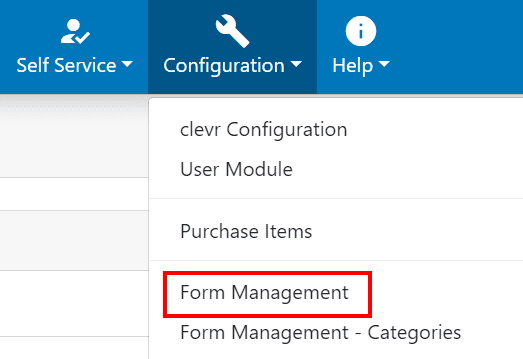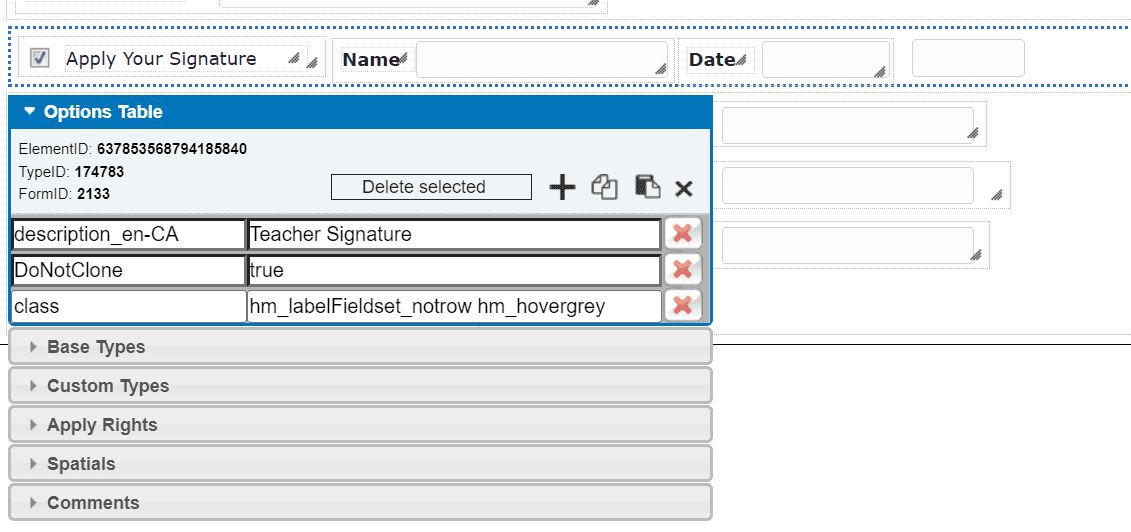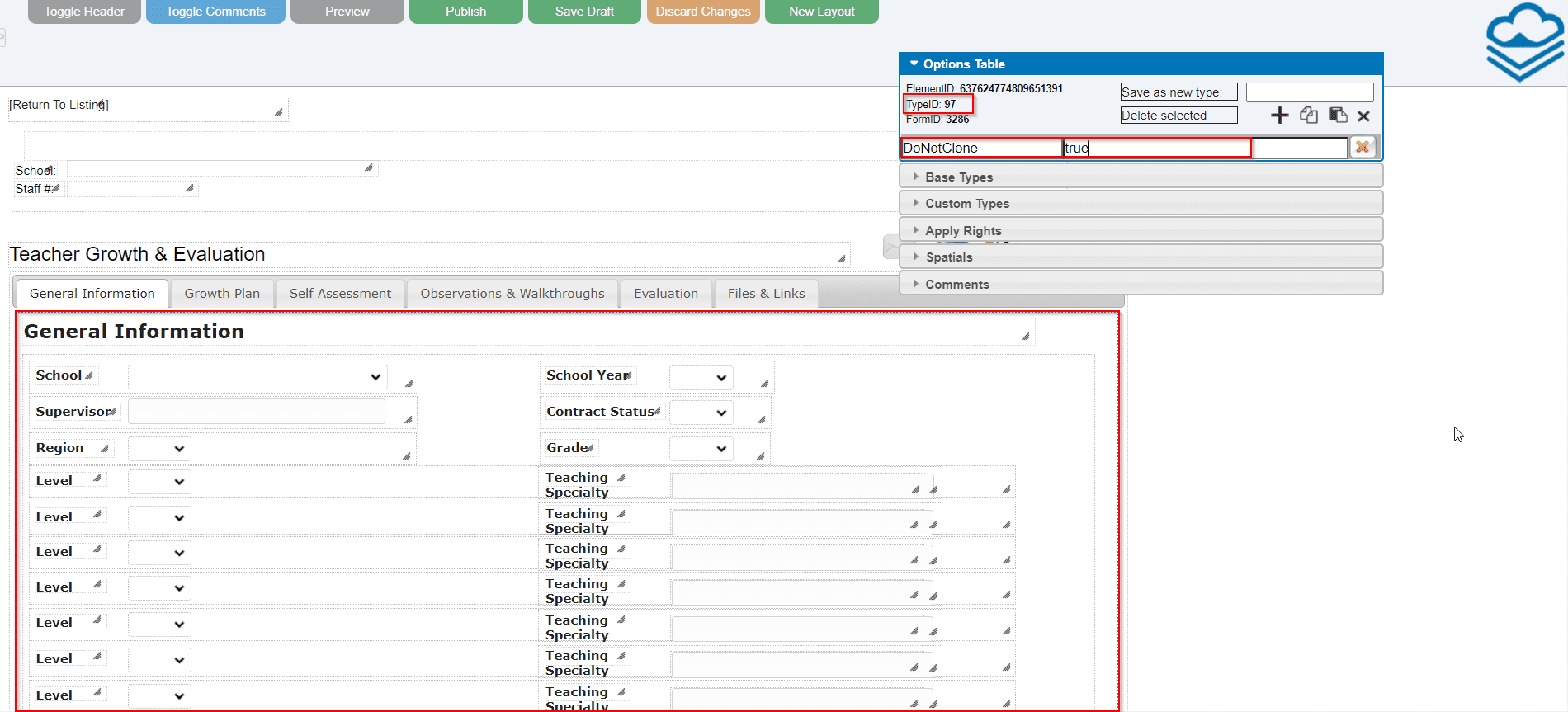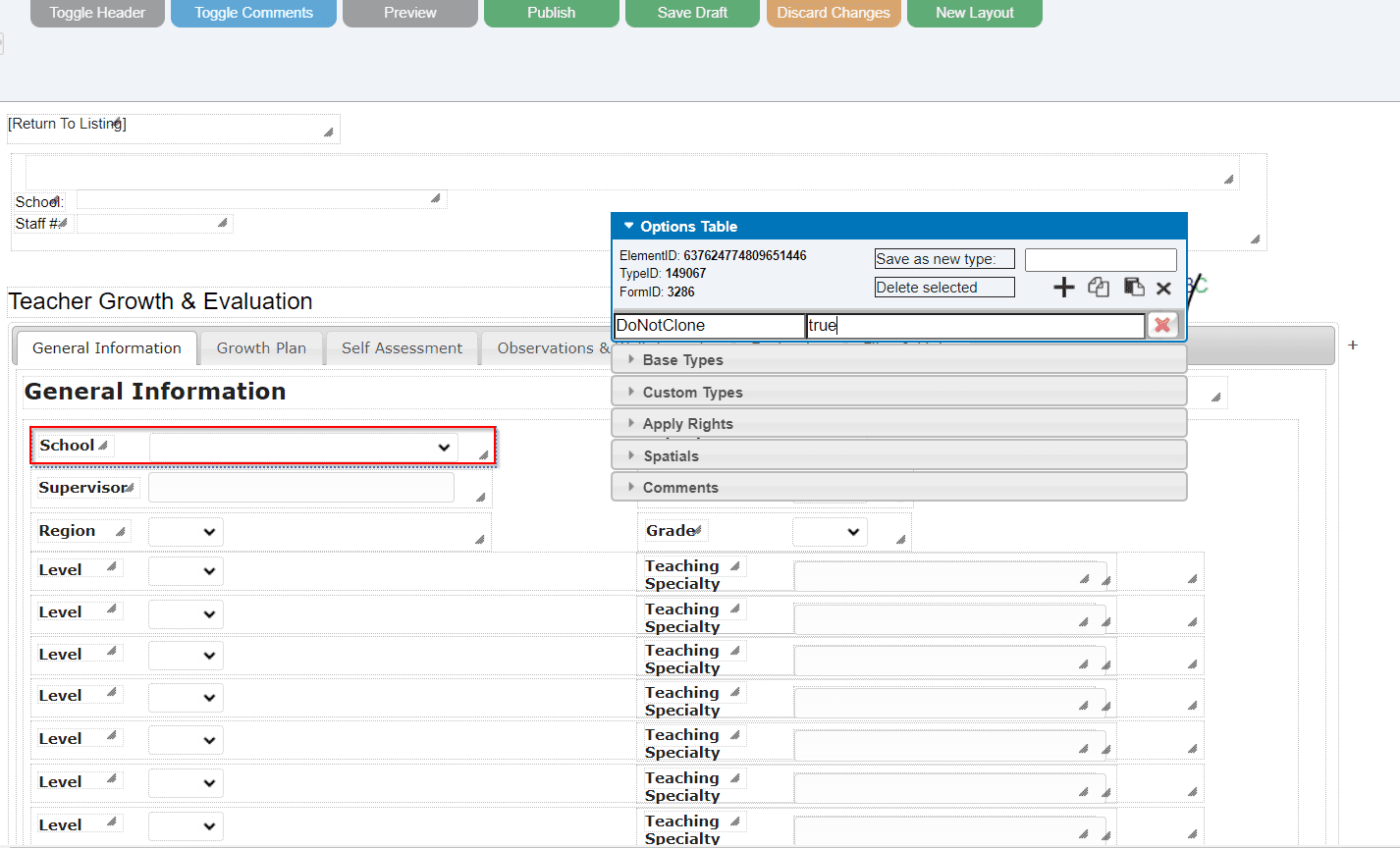| Table of Contents |
Record Rollover Prep Guide
| Page rights To access this feature, the Record Rollover Wizard page right is required. A role will also need the Form Manager to flag forms with the rollover style. |
| Common usage This feature is used by System Administrators to manage Record Rollovers. |
| Considerations Best suited for system administrators, not end users. |
What is a Record Rollover?
A Record Rollover is a process used within clevr to archive records. It is typically performed once a year, usually during the summer after data entry within the current school year’s records is complete.
Depending on preference, a rollover may happen once a year when data entry for a form is complete, or between school semesters. Most Districts/Divisions opt to rollover records once a year.
Step 1: Flagging Forms for Rollover and Selecting Rollover Type
To begin the Record Rollover, you will want to make sure you have identified the forms that need to be Rolled Over archived and the method/rollover type for archival. The Rollover type you select will be dependent on the type of form that is being rolled over.
In clevr, there are three Rollover types to choose from. Below we have identified the rollover types, examples of forms that are normally included, and whether preparation is required on the form itself.
| Rollover Type | Option to Select in Form Management Module | Action & Common Forms | Other Actions Needed |
|---|---|---|---|
| Lock Existing Record |
Include in Rollover – Default is bulk lock existing records |
Choose this option to lock existing records. This option will lock all records without preparing a blank new record for next year. New records will be created manually. Ideal for forms that capture a specific or one-time event:
|
No |
| Create New Record | Create New Record in Record Rollover |
Choose this option only if you’d like to make a blank new record for next year in addition to locking the previous records. If you would like a cloned record instead of a blank one, ensure you select the next option. Common forms for this type of rollover:
|
No |
| Copy Data Into New Record | Copy Existing Data to the New Record in Record Rollover |
Select this option if you’d like to copy the data from this year’s record into the record you are creating for next year in addition to locking the previous records. Selecting only “create new record” without this option will make the new record blank. Data within all fields with the exception of those flagged as DoNotClone will be available within the cloned record. Common forms:
|
Yes – Identify Fields that should be tagged as DoNotClone (see Step 4) |
Step 2: How to Flag Forms that are to be Rolled Over
The easiest way to locate a list of your forms that are available in clevr is through the Form Management Module
From the clevr Navigation Menu select the Configuration menu > Form Management module to identify the forms that have been flagged for Rollover.

The Form Management module will include all of the forms that are available on your clevr tenant.

To the right of the form name, the Include Rollover column will have a “Yes” value if the form has been flagged for rollover.

If a form needs to be flagged for Rollover, you can select the form name within the Form Management module to open the Form Specifics Page. Within the Form Details card, click Edit to update the Record Rollover flags.


Step 3: Determining Which Fields Should Not Clone if a Cloning Rollover is Selected
What is a “DoNotClone”?
A DoNotClone is a flag that can be applied to fields or tabs on a form to prevent their values from being copied into a cloned record. This usually includes fields that have signatures, notifications, dates, fields that only apply to this year’s record, etc.
-
Signatures: You should apply a DoNotClone to all signature fields. This is to prevent a digital signature from existing on a record that the signer has never viewed.
-
Notifications: You should apply a DoNotClone to all notification fields as this will prevent the appearance that a notification was sent for the newly cloned record.
-
Finalization Sections / Locking Triggers: Since these fields control whether a record is locked (which means a read only status is applied to the entire record which prevents users from being able to edit the records), adding a DoNotClone to Finalization Sections / Locking Triggers is required to prevent the newly cloned record from being locked.
-
Functionality: A DoNotClone should be applied to any field that is related to a JavaScript workflow functionality that shouldn’t contain a value when a record is cloned. Examples of this could be checkboxes that trigger disabling functionality, elements that store information related to other fields that are already set to DoNotClone, and hidden fields that are used to store information for workflows.
-
Fields That Only Apply to a Specific Year: DoNotClones are often used on fields or tabs of a form where it doesn’t make sense to have the information copied because the data within the field only applies to the current school year. If the data in the field is irrelevant for next year, will be replaced by new data, or will be time consuming for users to manually remove, then a DoNotClone would apply.
Why Configuring “DoNotClones Before the Rollover is Important
Record Rollovers use DoNotClones for the reasons noted above. When a record is rolled over, sections that do not have a DoNotClone are copied into the new records. All fields flagged with a DoNotClone will be blank when the record is copied.
How to Identify Fields that have been Flagged with “DoNotClone”
The Record Rollover Report will help you to identify all of your forms that are flagged for Record Rollover as well as the fields that are configured with DoNotClones.
From the clevr Navigation Menu > Go to the Configuration menu > Record Rollover Report:

clevr will open a separate tab in your browser indicating that it is generating the report.
Once the report has been created, the additional tab will close and the Record Rollover Report will be downloaded onto your computer.

-
Tenant Name: Displays the name of your clevr tenant which is the name of your district/division.
-
Form Name: This field identifies the name of the form. The form name will only appear on the report if it has been flagged with a Record Rollover type.
-
Create New Record: This field will identify if a new record for the form will be created during the Record Rollover Process.
-
True: Indicates that a new record will be created for the specified form (this will be true if the form is flagged for a New Record style rollover or a Cloned Record style rollover).
-
False: Indicates that a new record will not be created for the form after it has been rolled over. This will appear for locked style Record Rollovers where a new record will not be created.
-
-
Copy Existing Data: This field identifies if the form is tagged with a cloning style Record Rollover and if data from last year’s record will be copied over to the new record.
-
True: Indicates that the data will be copied to over to the new record with the exception of fields tagged with DoNotClone.
-
False: Indicates that the data from the old record will not be copied to the new record.
-
-
DoNotClone Fields: The fields identified here are fields that have been flagged with DoNotClone in the specified form.

Step 4: Flagging Fields as “DoNotClone” with the clevr Form Editor
| Page rights To access this feature, the Form Management and Editor page rights are required. |
| Common usage This feature is used by System Administrators to manage and edit clevr forms. |
| Considerations Best suited for system administrators, not end users. |
-
Field(s) and/or tab(s) that are flagged with a DoNotClone attribute will not carry over the data within them when the form is copied during the Record Rollover process – any fields flagged with “DoNotClone” will be blank when the record is copied. Adding a “DoNotClone” is ideal for fields that will not apply to next year’s record, saving users from being required to delete the content manually within the field when updating the cloned record.
The “DoNotClone” attribute works on individual elements and on parent containers and can be applied to the form using the clevr Editor.
To edit a specific form, you can select the form name within the Form Management module to open the clevr Form Editor. From the clevr Navigation Menu select the Configuration menu > Form Management module and select the name of the form that you wish to update.


In the Form Details page, click on the Design Form button at the top right of the screen.

This will open the clevr Form Editor allowing you to configure fields that should have a “DoNotClone” applied.
When applied to a field, the “DoNotClone” attribute will cause the field(s) or tab(s) to be blank when a record is cloned. This is perfect for forms that are cloning style Record Rollover candidates. Use “DoNotClones” on fields that do not apply to next year’s record to save users from needing to manually delete the information – this can be cumbersome when there is a lot of data within the record.
The “DoNotClone” attribute works on individual elements and on parent containers. Select the element you’d like to apply the “DoNotClone” to, then enter the DoNotClone attribute on the left with the right side value of true. Hit enter to save the attribute.
You should also include a description so that the fields with “DoNotClones” will have a name appear within the Record Rollover Wizard and Rollover Reports. If you do not assign a description, fields with “DoNotClones” applied to them will will display the element ID number instead of a name within the Rollover Reports.

Important Things to Consider
- “DoNotClone” will not propagate to subtabs. You must apply “DoNotClones” to each subtab on the form individually on each parent container (97) in the tab set.

- When a “DoNoClone” has been applied to a parent container, all child elements will be blank when the clone is made. There is no way to exclude “DoNotClone” from a child element if the parent container has a “DoNotClone” attribute. If you need a single element to still clone in a container, it will have to be applied individually to each field as required, versus the full container.

Record Rollover Wizard Documentation
- Please see our Record Rollover Wizard documentation here: Record Rollover Wizard – Admin Documentation
